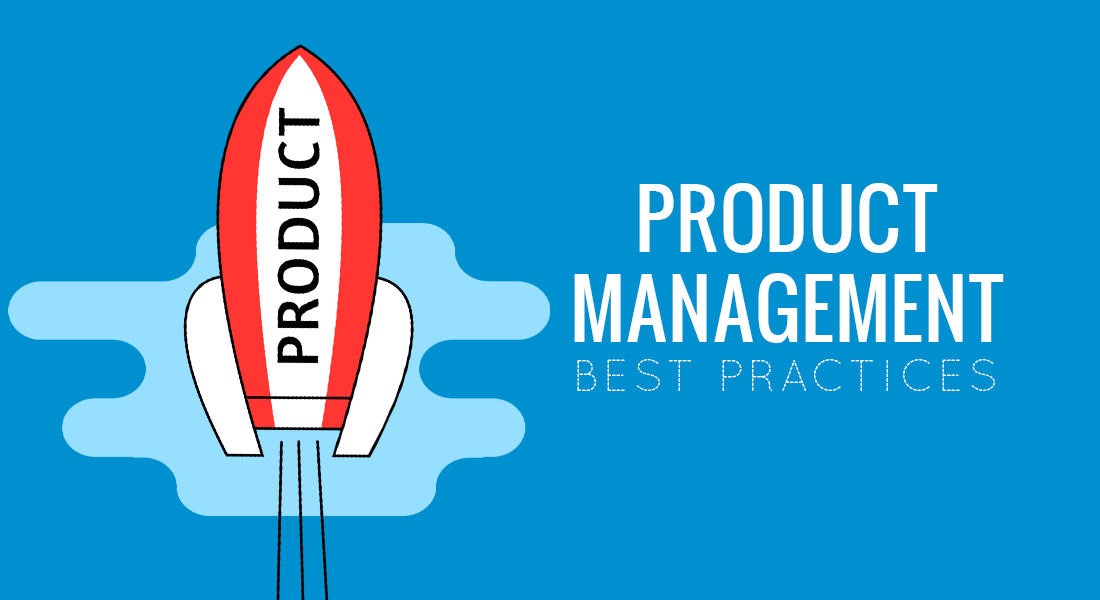
A product manager ensures that the product a company releases aligns with customers’ needs and expectations. It’s a challenging job that requires a lot of communication and coordination of efforts between different teams. So no wonder that the product management process can seem overwhelming if you’re new to the field or the company!
What you need is a primer of sorts to use as a guide as you begin to take on this new role. To start, we’ll go over some basics including a definition of the product management role and common product manager responsibilities. After that, you can read some great insights into the best practices and principles of product lifecycle management!
What is Product Management?
Atlassian offers an excellent definition:
Product management is an organizational function that guides every step of a product’s lifecycle: from development to positioning and pricing, by focusing on the product and its customers first and foremost. To build the best possible product, product managers advocate for customers within the organization and make sure the voice of the market is heard and heeded.
Product managers work largely for technical companies. Their key responsibility is to articulate the main customer needs and bigger objectives that the product should fulfill, communicate that vision to the team, and ensure its successful execution. Most technical product managers “sit” at the intersection of business, technology, and user experience, meaning that they are constantly involved in balancing the decisions between these three business areas (more on this later!).
In general, the role of the product manager is largely strategic, and organizational as they are set in charge of creating the overall product strategy and, oftentimes, are simultaneously involved in multiple product portfolio management.
What Does a Product Manager Do?
Product managers take on a variety of responsibilities to ensure the success of the product they lead, such as:
- Gathering and understanding customer requirements.
- Communicating technical requirements and specifications to non-technical users and team members.
- Assessing new product ideas and suggestions for upgrades.
- Analyzing potential competition.
- Setting up and meeting product management metrics.
- Managing product upgrades and fixes.
- Managing production schedules.
- Overseeing the process of fixing and mitigating any issues.
- Making recommendations regarding product pricing.
- Overall product planning.
In essence, product managers set the goals for the product, define success, and help rally the teams towards achieving all the envisioned outcomes.
Helpful template: Product management canvas
Product vs Project Manager: What’s The Difference?
A project is a temporary effort that is undertaken to create or improve something. A product is a finished item that is offered to a specific audience. Most products are the result of a project. Most improvements to products also involve the execution of one or more project efforts.
A project manager works to ensure that the projects they lead are completed successfully. A product manager works to ensure that the product they manage continues to meet or exceed user expectations. These roles are often complementary as product managers often work with project managers to ensure that their outcomes are beneficial to the success of the product.
Essential Product Management Skills
The skills needed to be a product manager are best described using the CORE model — communication, organization, research, and execution.
First of all, you’ll need to develop strong soft and interpersonal communication skills such as:
- Negotiation skills to navigate often conflicting needs and interests of business vs customer.
- The ability to delegate tasks effectively and empower strong performance within your team.
- Flexibility to deal efficiently with often sudden changes in user requirements and market conditions.
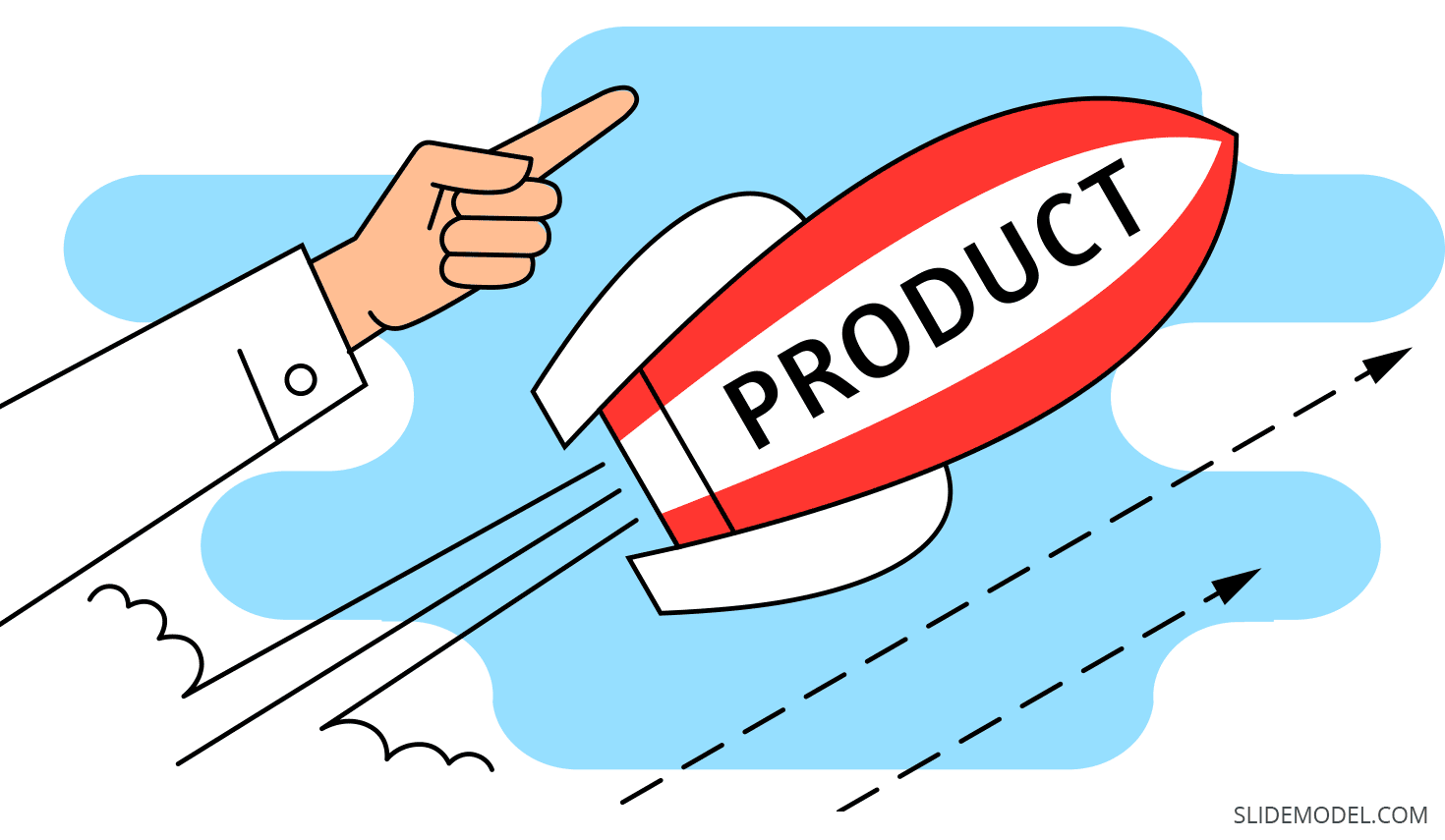
Secondly, you’ll need to invest in certain hard skills, too. While you don’t have to be a UX, technical and business expert at the same time to succeed in software product management, the next skills are highly beneficial in this position:
- General business competency and technical know-how. You don’t need to be a web developer or UX designer. However, you should be able to recognize good performance vs. bad performance and understand what makes software or other product desirable to users.
- Strong research and analysis skills to create viable product plans and build data-backed product roadmaps.
- Familiarity with traditional and behavioral economics. Again, this knowledge can help you take more weighted product decisions as you’ll be able to more carefully assess various trade-offs, run gap analysis, and estimate the future consequences of current actions.
Of course, you’ll also need to have at least some basic knowledge of product and services management.
6 Essential Product Management Best Practices
1. Use The Kano Model to Prioritize Product Features
The Kano model is one of the popular prioritization techniques to include in your product management framework.
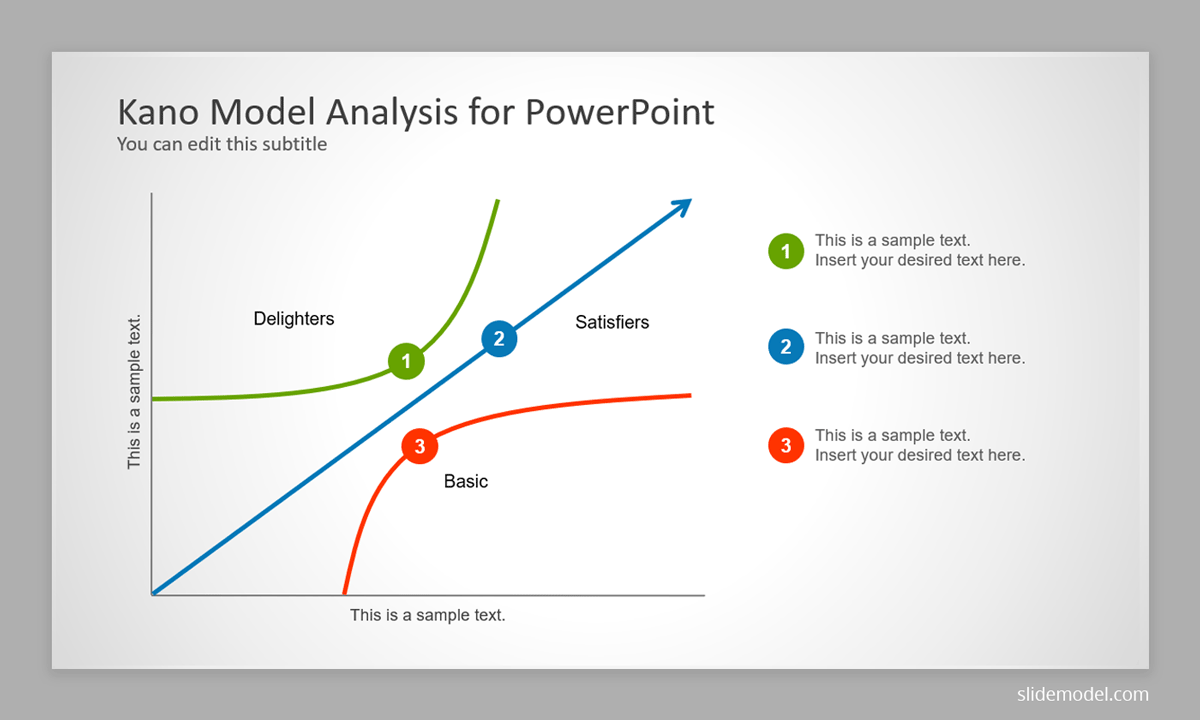
Source: Kano Model PowerPoint template by SlideModel.com
The Kano model suggests grouping all new potential features into three categories:
- Possible delighters — a high chance of success among customers.
- Satisfiers — good-enough features that will appeal to most.
- Basic — the minimum effort features that may disappoint some.
Senior product managers know that pursuing “delighters” is not always feasible, so they’ll need to run additional cost and feasibility analysis to line up the ultimate contenders for the next release.
Other popular alternatives to Kano include:
- MoScOW — a prioritization technique, categorizing features as must-have, should have, could have, and won’t have.
- KJ technique involves conducting meetings, brainstorming, and setting priorities through mutual consensus.
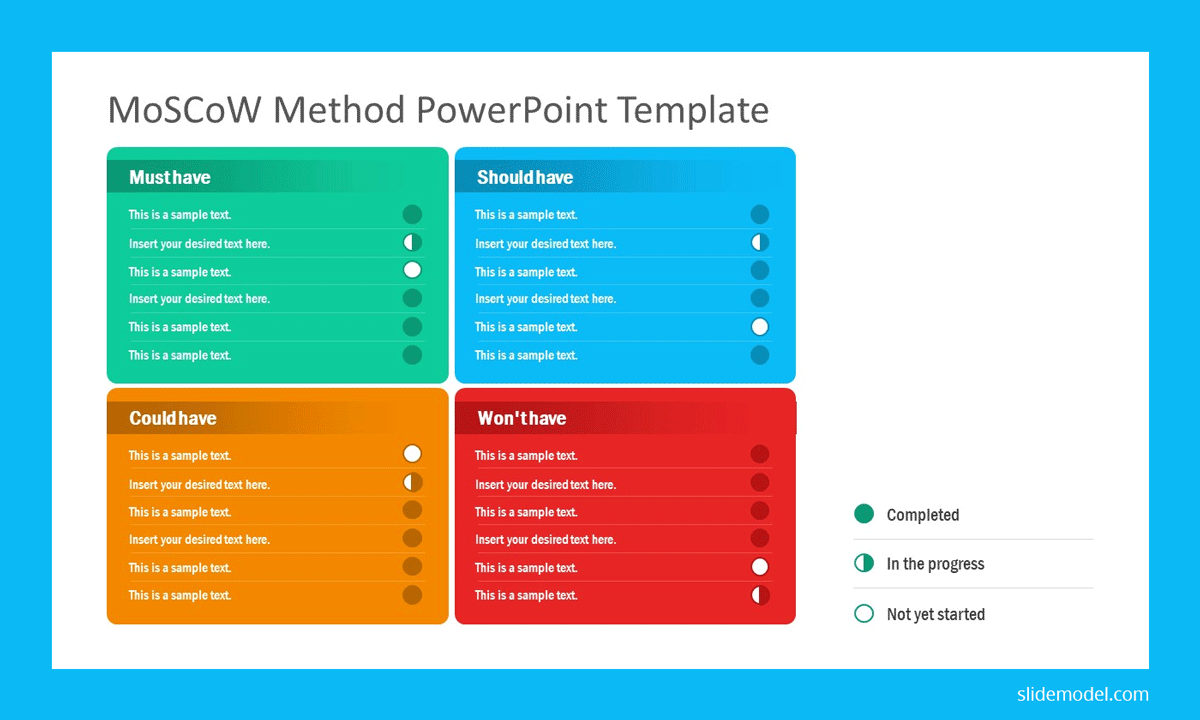
Source: MoSCoW template by SlideModel.com
2. Learn to Create Great User Stories
To remind, user stories describe:
- The functionality of your software
- How it will help users accomplish their objectives
- The outcome desired by the user
As an agile product owner, you should know how to write detailed and thorough user stories for your team. Here are some pointers:
- Each story should be aligned with a specific buyer (user) persona.
- Use language and phrasing that speaks from the perspective of the user.
- Always add a clear acceptance criterion — a set of conditions, clarifying when a Story is completed.
Quick tip: Remember, your main goal is to translate user needs into features, not features into user needs.
3. Create Detailed Product Requirements Documents
The Product Requirements Document (a.k.a. PRD) is the flagship document for any product initiative. It will be used by all stakeholders to guide the process of product development, refinement, and support.
To compose a comprehensive product requirements document follow the next steps:
- Define the purpose of the product based on the needs and roles of the users.
- Clearly state what problem the product solves.
- Discuss the desired functionality with stakeholders.
- Create a list of desired features. These will be prioritized later.
- Address what is required for the product to be ready for release.
- Determine which features need to be a part of the first iteration.
- Identify external conditions that must be met.
- Create an explanation of metrics used to determine that all requirements have been.
Ideally, your PRD should also include deadlines for key milestones (deliverables). Doing so will help you stay focused on the key goal and prevent scope creep.
4. Start Creating Priority Buckets
Another popular prioritization technique in agile product development (and part of one of the available product prioritization frameworks), is using priority buckets.
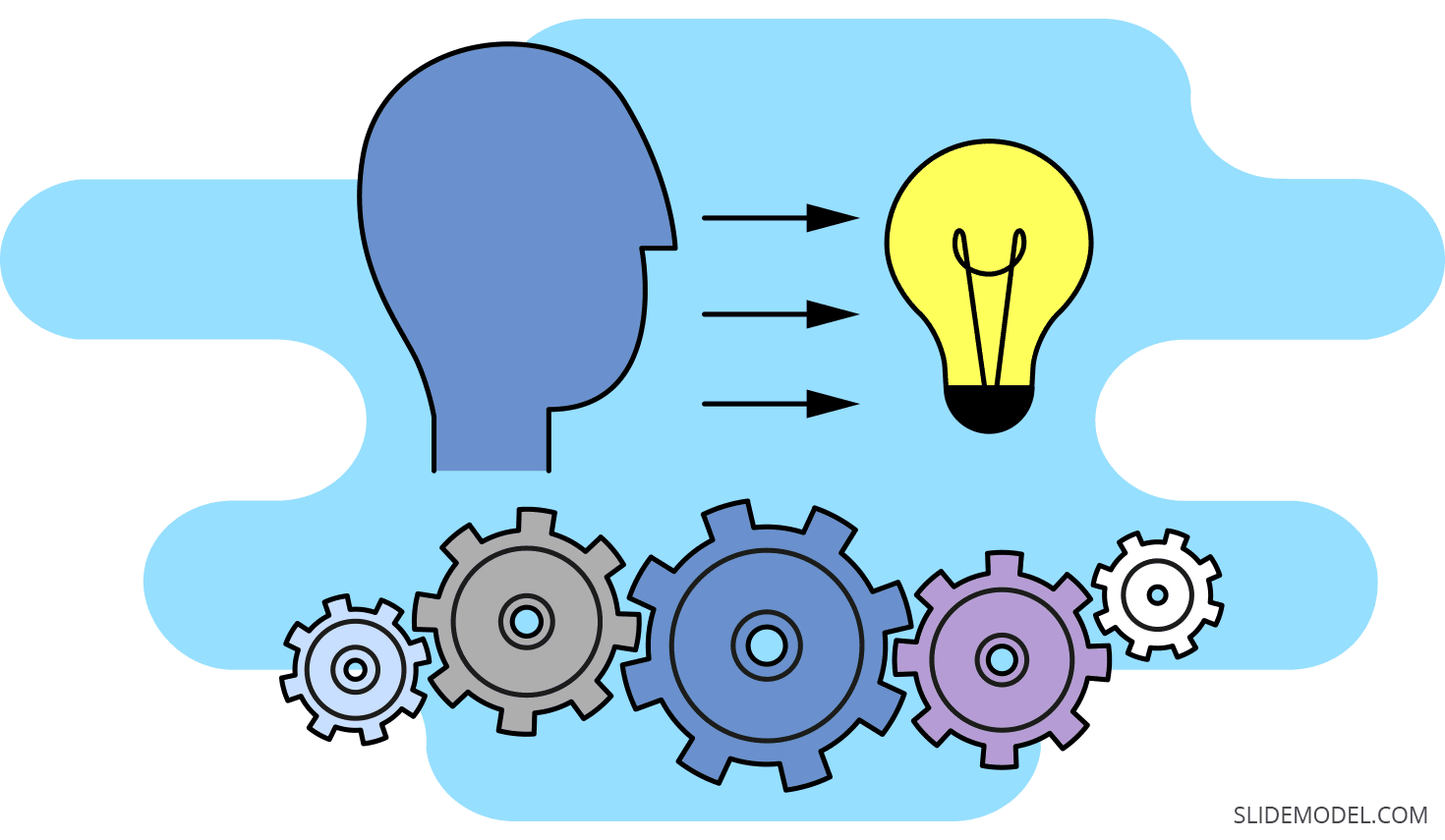
As the name implies, you place every task your team needs to complete into one of the “buckets” e.g. Now, Next, Later. Again, it’s a simple way of prioritizing what needs to be done when.
For example, ‘Now’ could mean tasks to be done within the next two to four weeks. ‘Next’ might be the priority bucket for items to be completed one to three months from now. Finally, ‘Later’ might be for any tasks that can be put off for 3+ months.
5. Try The Categorize, Cluster, Communication Framework
The Categorize, Cluster, and Communication framework is another excellent methodology for dealing with new requests during product development. Popularized by Google product management director Rajen Sheth, this technique is aimed at building better product roadmaps. Here’s how:
Categorization: First, you’ll need to identify the “big boulders” or pillars of your digital product management strategy. You need to place each one in either of the following categories:
- Committed with a timeline. Your team is willing to do this, and they know approximately when it will be delivered.
- Committed without a timeline. Your team is willing to do this, but they cannot commit to an exact date for reasons X, Y, Z.
- Uncommitted but likely. The team is not willing to commit to this yet. There are too many unpredictable factors at the moment. However, it is likely something they will be willing to do in the future.
- Visionary. These are lofty goals that the team would love to accomplish. Unfortunately, they don’t know how they would do that at the moment.
- Will not do. Not every solution or feature requested is going to be the right one for a particular product. Sometimes it’s okay to say no to a request, even when it’s from a customer.
Cluster: The next step is to place all the boulder goals onto the timeline eg:
- This Quarter
- Next Quarter
- Next 12 Months
- Future
Communicate: Once you have this combo of commitments + timelines, you can take it on a ‘roadshow’ and present it to stakeholders, customers, and other teams to gather additional feedback and insights. Incorporate these into further prioritization.
6. Master the Art of Relative Estimates
Estimation is one of the central concepts in agile product management. Since you are collecting requirements from the business and communicating these to developers, you cannot always fully understand the nuts and bolts of implementation. An estimation can help you understand how much work each task will involve, and thus, you can set better relative priorities for each of them.
Now, there are many ways to make estimations in agile:
- Using points
- With hours
- Using affinity mapping
- With Tee-shirt sizing
- By dot voting, etc.
What all of these have in common is that they are absolute estimates aka each item is estimated in isolation without being compared to another one.
The relative estimation approach, on the contrary, suggests that all tasks/user stories should be evaluated by comparison or by grouping with items of equivalent difficulty. The perks of using relative estimation are rather straightforward:
- It takes less time/effort, plus easier to refine.
- This technique is easier to explain to others to justify your decisions.
- Us humans are naturally better at relative than absolute estimation.
Product Management Examples
Check our complete collection of product management templates for PowerPoint and Google Slides.
To Conclude
Product management is a lofty and constantly-evolving discipline due to its practical nature. That’s why the next best product owners are life-long learners, eager to embrace new techniques and experiment with various managerial frameworks. Hopefully, this guide gave you some solid pointers towards where your further investigation into product management should go!
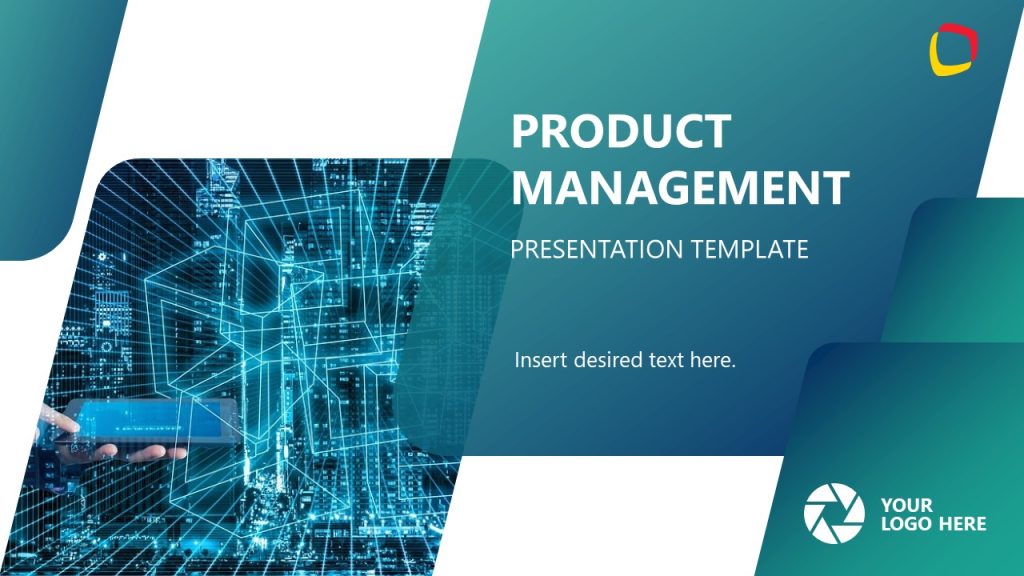
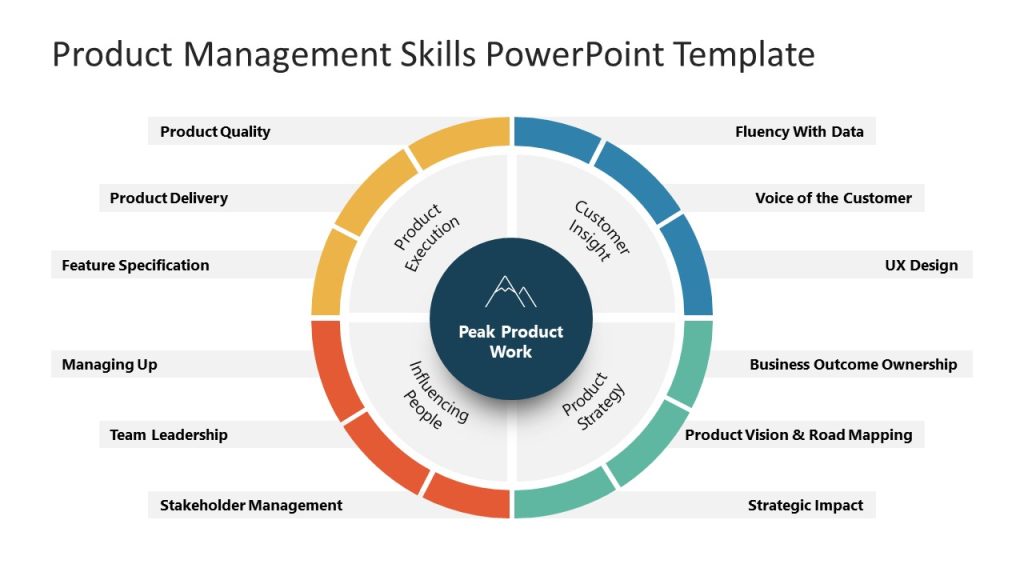
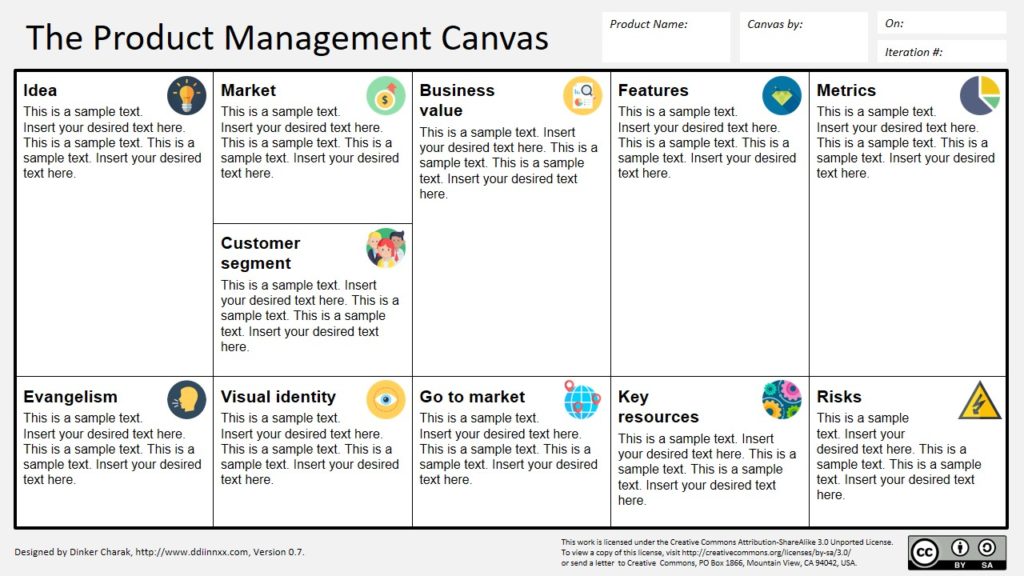
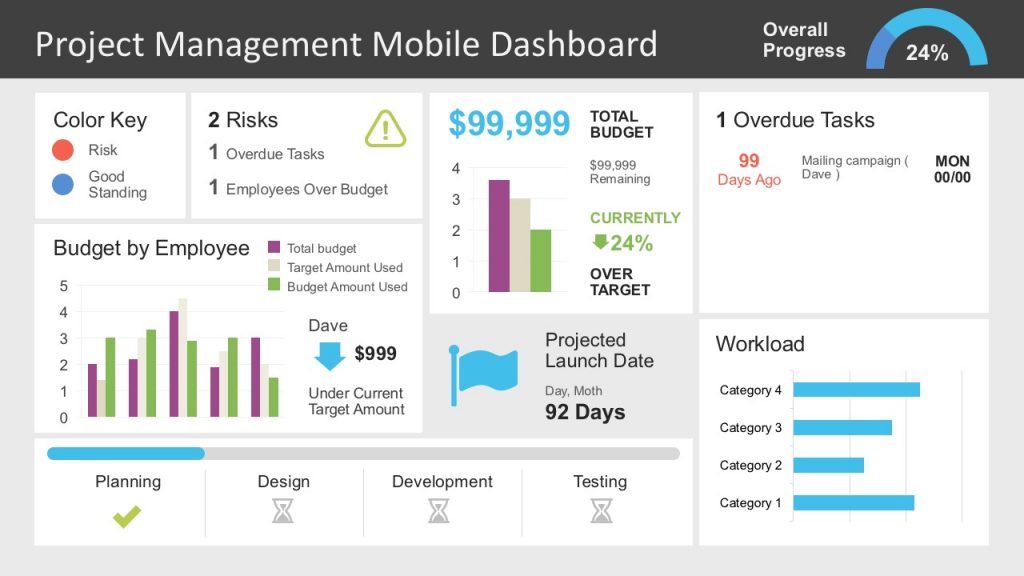
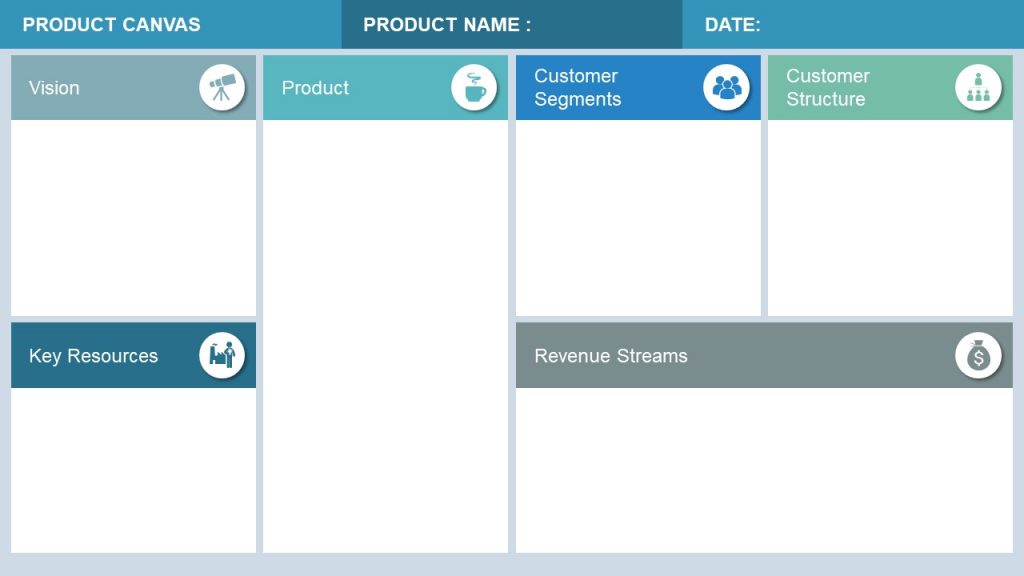

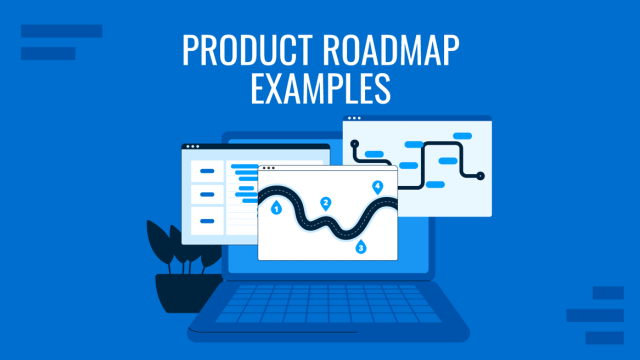
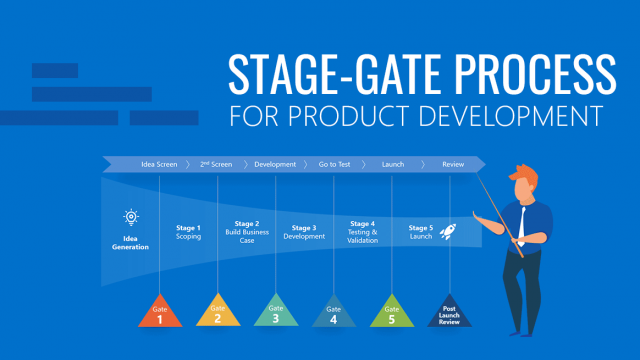
Great ?.. Very informative ?
Thank you
Hi Jacqueline.
Thank you for your feedback.
Happy to help.
Regards
GV.
Great. Very informative.
Thank you